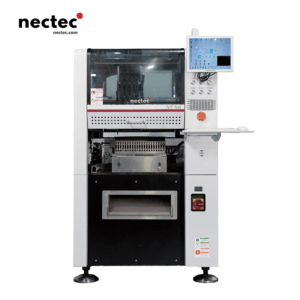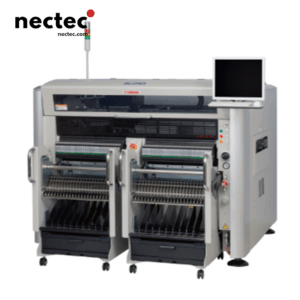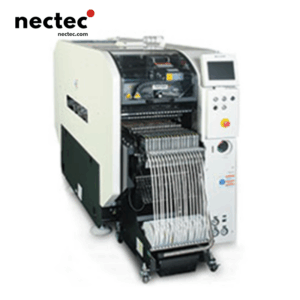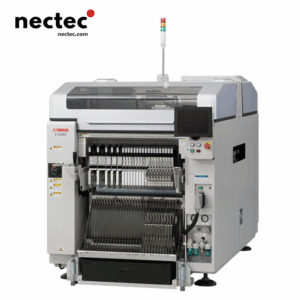In the fast-paced world of electronics manufacturing, precision, efficiency, and speed are paramount. As the demand for more complex and compact electronic components continues to grow, manufacturers are turning to advanced technologies to keep pace. One such innovation is the pick en place soldeermachine. This powerful tool has transformed the way circuit boards are assembled, ensuring higher accuracy and faster production times than ever before.
Wat is een pick-and-place-soldeermachine?
A pick en place soldeermachine is a type of automated equipment designed to accurately place electronic components onto printed circuit boards (PCBs). The machine utilizes a combination of robotics and sophisticated software to position components precisely where they need to go, usually before soldering takes place. This technology helps streamline production lines, reducing the potential for human error and increasing overall throughput.
Hoe werkt het?
The process begins with the creation of a digital design file that outlines the components and their respective placements on the PCB. The pick and place machine reads this file and prepares for the operation. Using suction cups, the machine’s robotic arms pick up the components from a designated feeder. Next, the machine accurately places the components onto the PCB, ensuring the right orientation and alignment.
Once the components are in place, they can be soldered onto the board, either through a separate soldering process or simultaneously in machines that combine both functions. The accuracy of the placement is crucial, as it ensures the proper electrical connections are made for the final product to function as intended.
Why Choose a Pick and Place Soldering Machine?
As manufacturers aim for higher efficiency and lower production costs, the benefits of using a pick and place soldering machine become clear:
- Verhoogde snelheid: Automated machines can operate much faster than human operators, significantly reducing assembly times.
- Verbeterde precisie: The accuracy of placement minimizes errors, leading to fewer defects and rework.
- Schaalbaarheid: Automated systems are easily scalable to meet increased production demands
- Kostenefficiëntie: Reducing labor costs and materials waste contributes to lower overall production costs.
- Verbeterde kwaliteitscontrole: Many machines come equipped with advanced inspection technologies, ensuring consistent quality throughout the production process.
Soorten pick-and-place-machines
There are several types of pick and place machines available on the market, catering to different production needs and budgets. Some key categories include:
- Machines op instapniveau: Ideal for small businesses and hobbyists, these machines are affordable and suitable for low-volume production.
- Machines uit het middensegment: These machines offer increased speed and efficiency, suitable for moderate production runs.
- Hoogwaardige machines: Designed for large-scale manufacturers, these machines are capable of handling a vast range of components at high speeds with superior precision.
- Modulaire systemen: These systems allow for customization, enabling manufacturers to adapt their equipment to meet specific needs.
Challenges with Pick and Place Machines
While pick and place machines offer numerous advantages, they are not without challenges:
- Initiële kosten: The upfront investment for high-quality machines can be substantial.
- Opleidingsvereisten: Operators need specialized training to effectively use and maintain these machines.
- Onderhoud: Regular maintenance is essential to avoid downtime and keep machines functioning optimally.
De juiste pick-and-place-machine kiezen
When selecting a pick and place soldering machine, manufacturers should consider several factors:
- Productievolume: Assess how many boards will be assembled and select a machine that meets production demands.
- Onderdeel Variëteit: Ensure the machine can handle the range of components specific to your products.
- Budget: Determine a budget that allows for both initial purchase and ongoing maintenance expenses.
Toekomstige trends in pick-and-place-technologie
The electronics manufacturing industry is witnessing unprecedented advancements, and pick and place technologies are at the forefront. Key trends include:
- Integration of Artificial Intelligence (AI): AI technologies are being incorporated to improve accuracy and efficiency in component placement.
- Automatisering en robotica: The move towards full automation in manufacturing processes is making pick and place machines more intelligent and autonomous.
- IoT-integratie: Internet of Things (IoT) technologies allow machines to communicate with each other and with operators for improved data tracking and decision-making.
Laatste gedachten
As the electronics manufacturing landscape continues to evolve, pick and place soldering machines are becoming indispensable tools for companies seeking to enhance their production capabilities. With the potential for increased speed, accuracy, and efficiency, these machines are likely to remain a central component in the future of electronics assembly, paving the way for innovation and growth in the industry.












